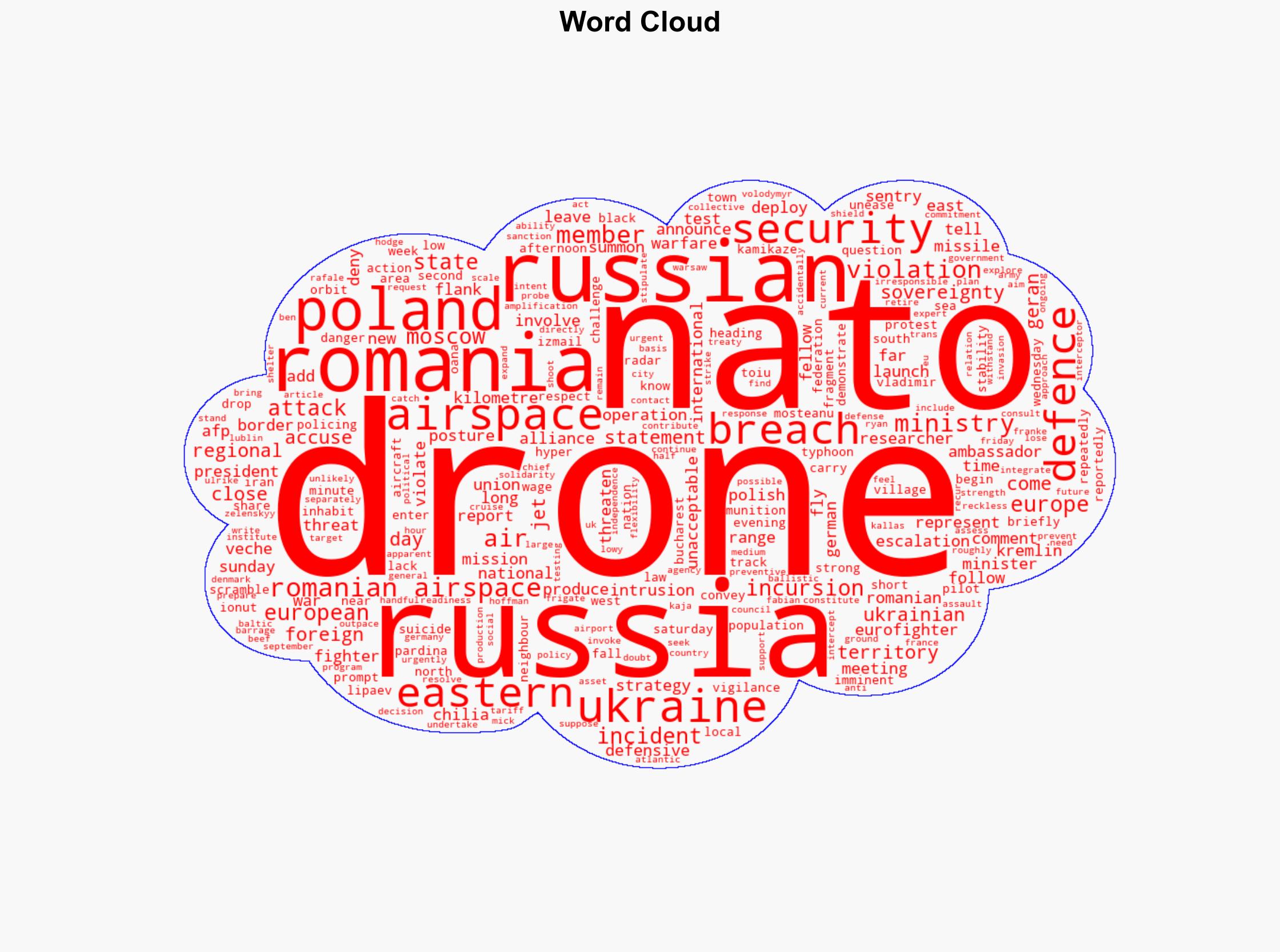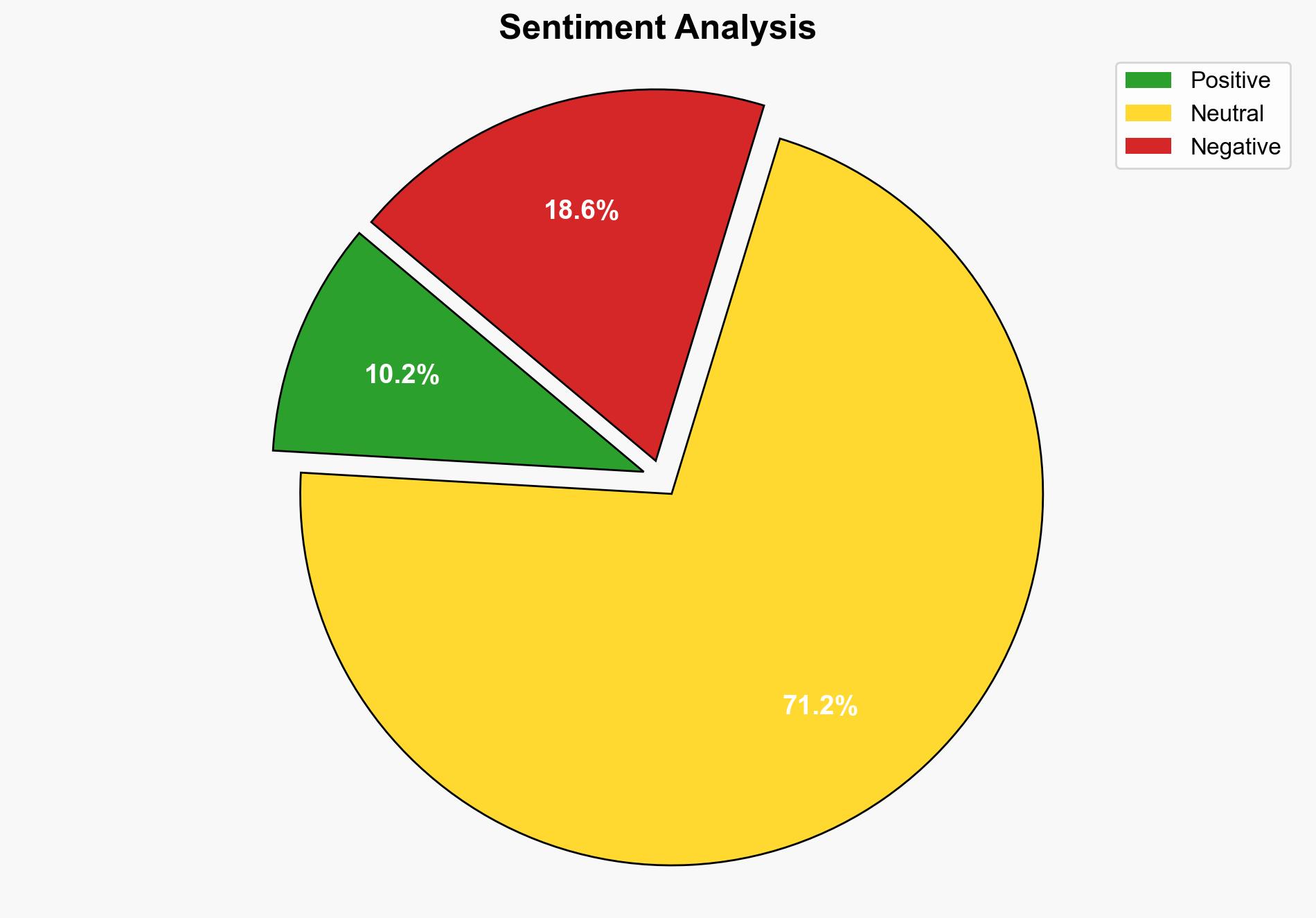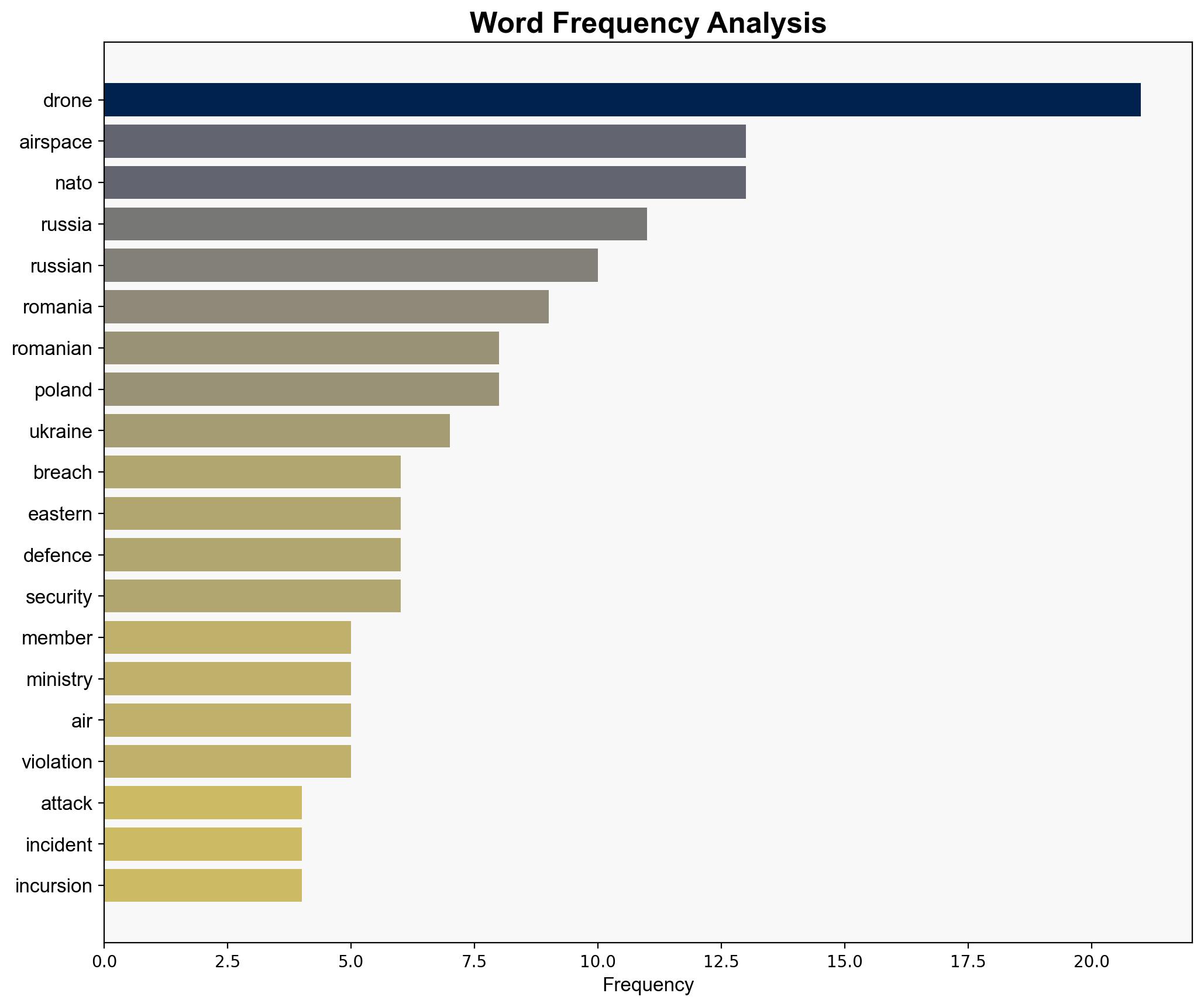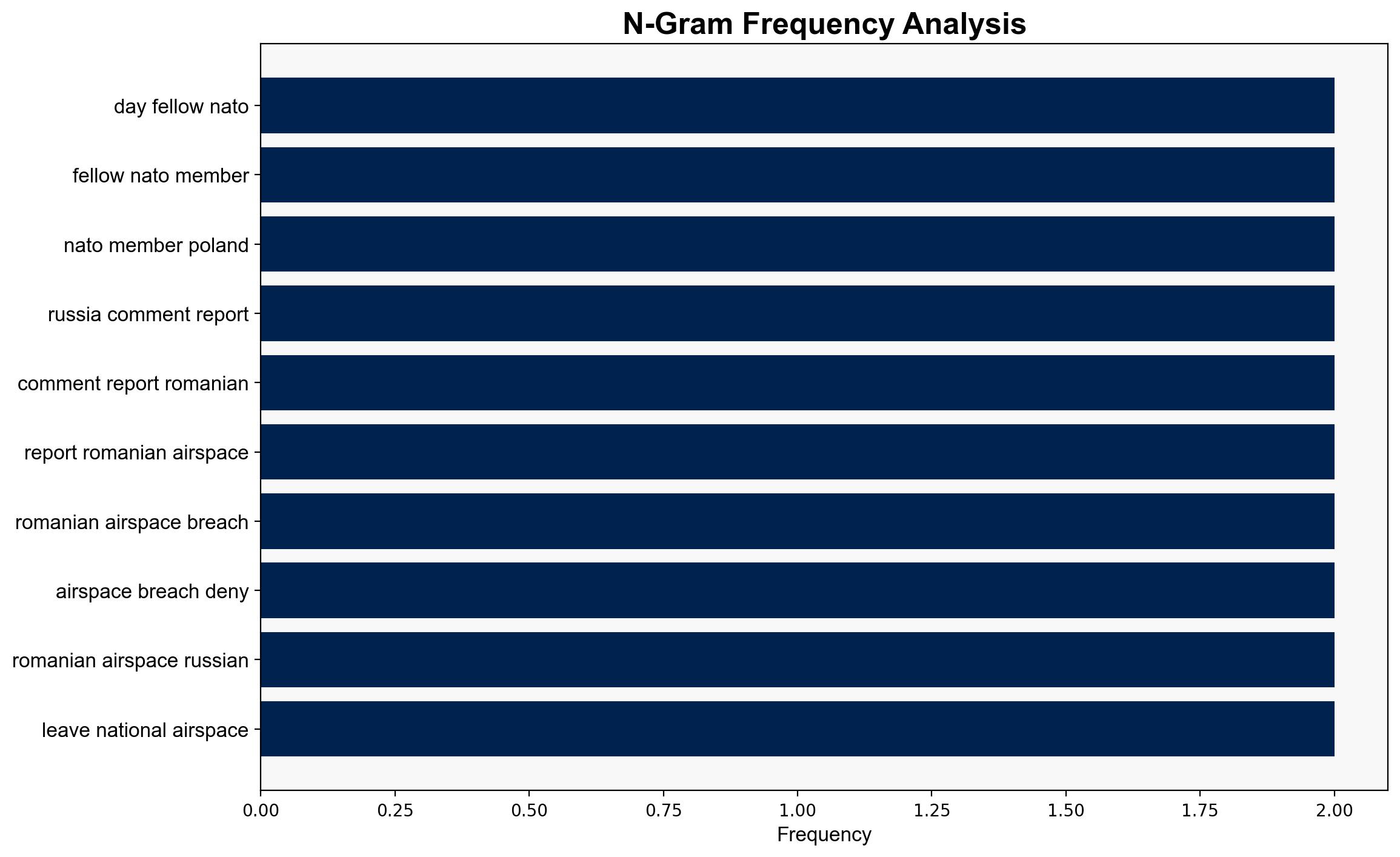Second Russian violation in NATO airspace after drone intercepted over Romania – ABC News (AU)
Published on: 2025-09-15
Intelligence Report: Second Russian violation in NATO airspace after drone intercepted over Romania – ABC News (AU)
1. BLUF (Bottom Line Up Front)
The most supported hypothesis is that Russia is deliberately testing NATO’s response and resolve on its eastern flank through calculated airspace violations. This is assessed with moderate confidence due to the pattern of incidents and geopolitical context. Recommended action includes enhancing NATO’s air defense readiness and diplomatic engagement with Russia to deter further provocations.
2. Competing Hypotheses
1. **Deliberate Provocation Hypothesis**: Russia is intentionally violating NATO airspace to test the alliance’s response capabilities and resolve, potentially as a prelude to further military actions or as a psychological tactic to create unease among NATO members.
2. **Operational Error Hypothesis**: The airspace violations are unintentional, resulting from operational errors or miscommunications during complex military operations near sensitive borders.
Using ACH 2.0, the deliberate provocation hypothesis is better supported due to the timing, frequency, and geopolitical context of the incidents, as well as Russia’s historical behavior in similar scenarios.
3. Key Assumptions and Red Flags
– **Assumptions**: The deliberate provocation hypothesis assumes that Russia has strategic intent behind these actions and that the incidents are not isolated or accidental.
– **Red Flags**: Lack of direct evidence linking these actions to explicit Russian strategic objectives could indicate potential misinterpretation. The operational error hypothesis assumes a level of Russian military incompetence that may not align with known capabilities.
– **Blind Spots**: Limited intelligence on internal Russian decision-making processes and potential undisclosed diplomatic communications.
4. Implications and Strategic Risks
– **Escalation Risks**: Continued violations could lead to military confrontations, accidental engagements, or miscalculations, increasing regional instability.
– **Geopolitical Dynamics**: These actions may strain NATO-Russia relations further and could be used by Russia to gauge NATO’s unity and resolve.
– **Psychological Impact**: Repeated violations may erode public confidence in NATO’s security assurances among Eastern European member states.
5. Recommendations and Outlook
- Enhance NATO’s air defense systems and readiness along the eastern flank to deter further violations.
- Engage in diplomatic dialogue with Russia to clarify intentions and reduce the risk of miscalculations.
- Scenario Projections:
- **Best Case**: Diplomatic engagement leads to a reduction in airspace violations and improved regional stability.
- **Worst Case**: Continued provocations lead to a military incident, escalating into broader conflict.
- **Most Likely**: Ongoing low-level provocations without significant escalation, maintaining regional tension.
6. Key Individuals and Entities
– Vladimir Lipaev
– Oana Toiu
– Ionut Mosteanu
– Volodymyr Zelenskyy
– Kaja Kallas
7. Thematic Tags
national security threats, regional focus, geopolitical tensions, airspace violations





